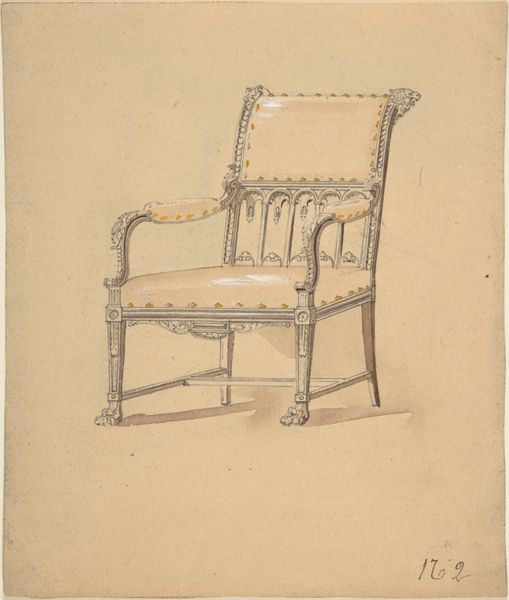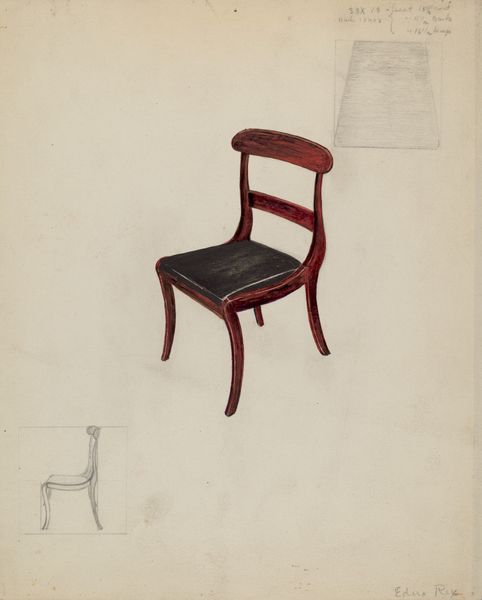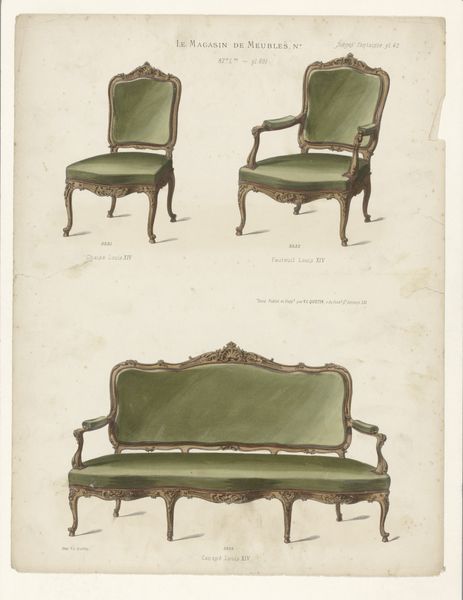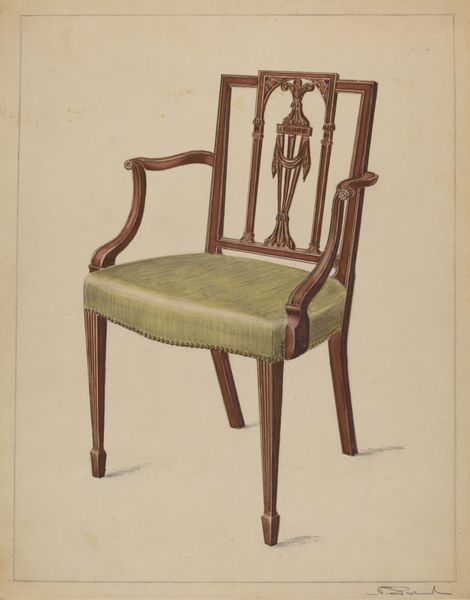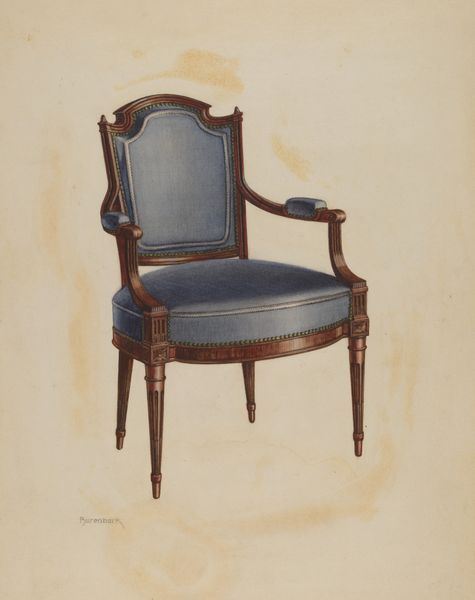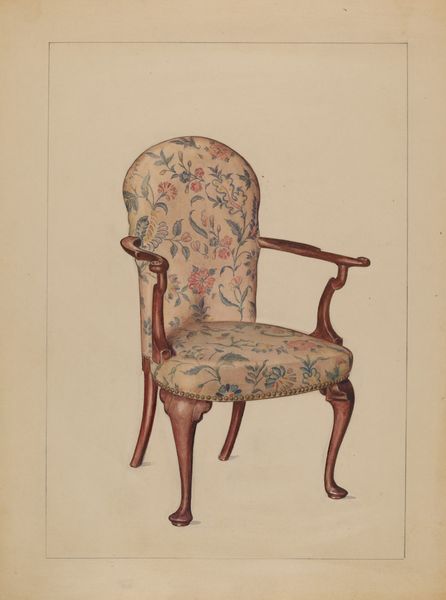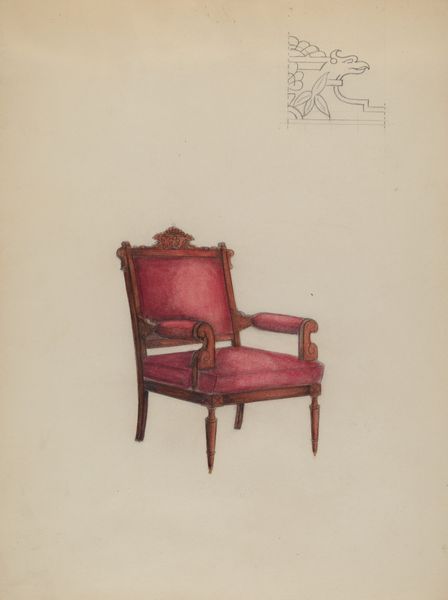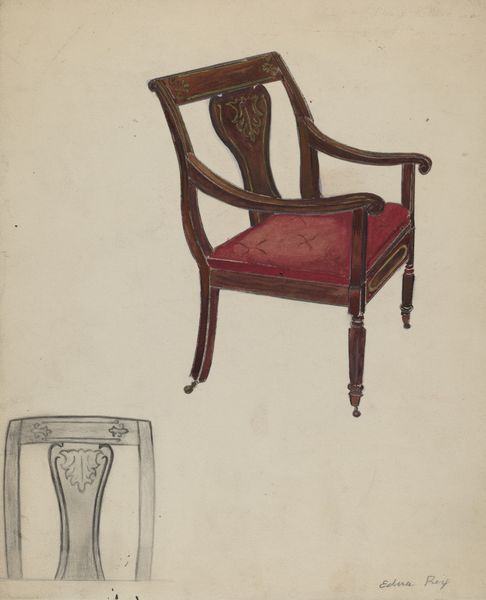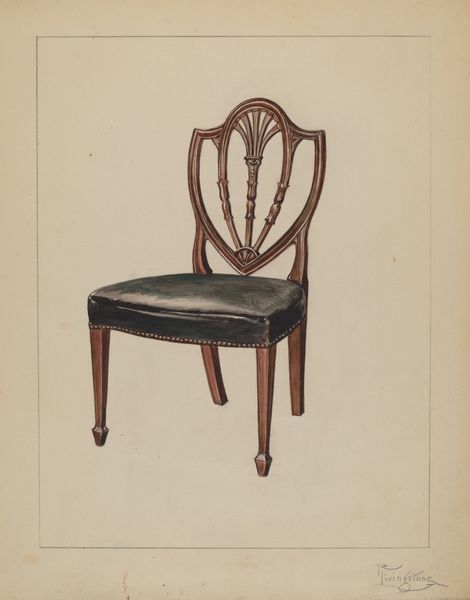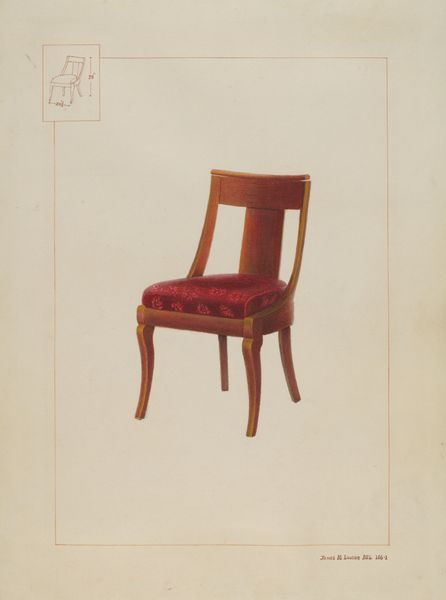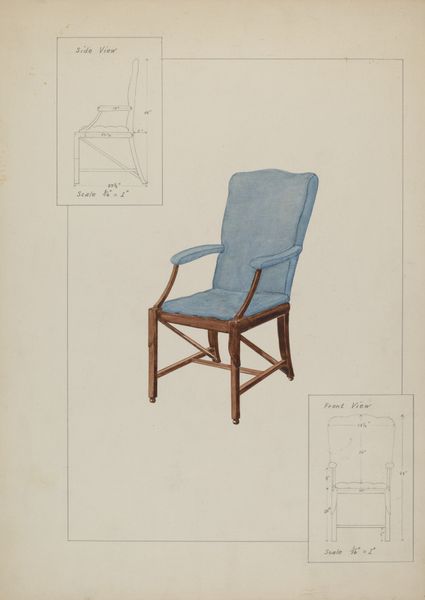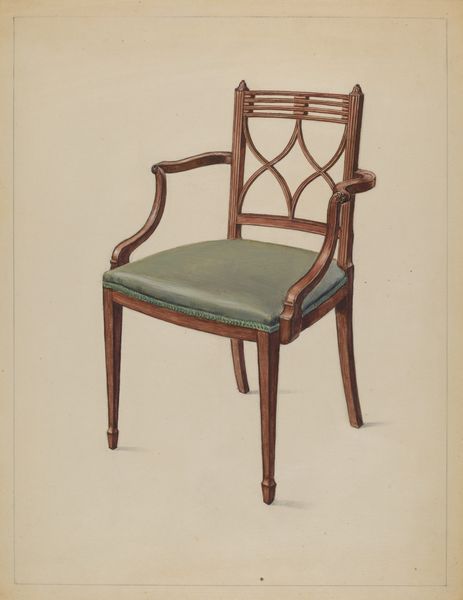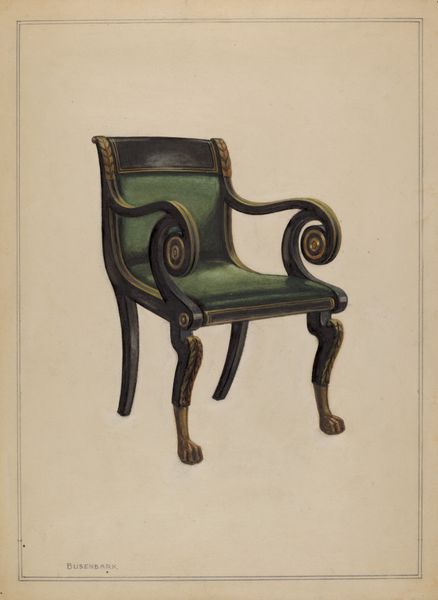
drawing, watercolor
#
drawing
#
art-nouveau
#
furniture
#
form
#
watercolor
#
watercolour illustration
#
sketchbook art
Dimensions: height 630 mm, width 480 mm
Copyright: Rijks Museum: Open Domain
Curator: Here we have E. Humbert's "Ontwerp voor een fauteuil," a design for an armchair, circa 1900. It's rendered in watercolor and drawing. Editor: It’s incredibly delicate. The colour palette gives it a sort of ethereal, dreamlike quality, doesn't it? A fugitive impression. Curator: It absolutely does. And seeing the sketches next to the finished watercolor allows a unique glimpse into the design process. It prompts one to consider: for whom was this chair intended? The elongated lines suggest an aspirational elegance associated with elite women's social circles of the Belle Époque. Editor: Interesting point about aspiration. My focus immediately goes to materiality. Considering that it’s an early 20th-century design, what kinds of wood would be readily available, and how would that dictate the actual production and aesthetic of this chair? The textile covering, too - a light blue satin, perhaps? All these materials suggest a boudoir setting, highly specialized craft, and expensive labor. Curator: Precisely. And viewing this design through a feminist lens, it also asks crucial questions: What would this object represent within a private space, for a woman in this time? Perhaps both an object of comfort but also constraint, embodying her prescribed role within domestic sphere. The sinuous lines, characteristic of the Art Nouveau style, could even symbolize the complexities and confinements of her identity. Editor: I think looking into furniture design allows us to think more broadly about social hierarchies reflected through everyday objects. This "fauteuil", if it existed, would dictate posture and behaviour. Also, Humbert, as the designer, is dictating those choices in his creation. This goes well beyond the question of form. The economic ramifications and constraints are there. Who is consuming such designs and what power dynamics exist within the production networks? Curator: An insightful observation. Ultimately, this rendering is an opening for contemplating gendered social dynamics, craft, and material realities during the Art Nouveau period. Editor: Exactly, and even considering who’s making this stuff; who is consuming these images. I love that a design rendering brings us so many different questions on how we consider art history and material culture.
Comments
No comments
Be the first to comment and join the conversation on the ultimate creative platform.
